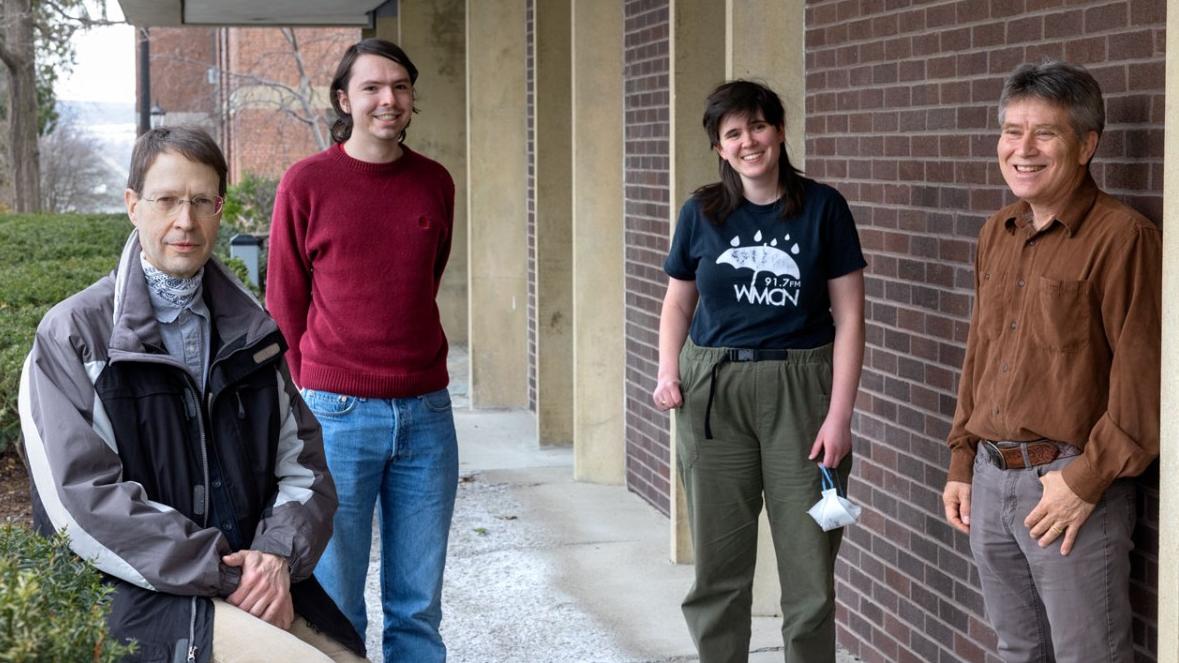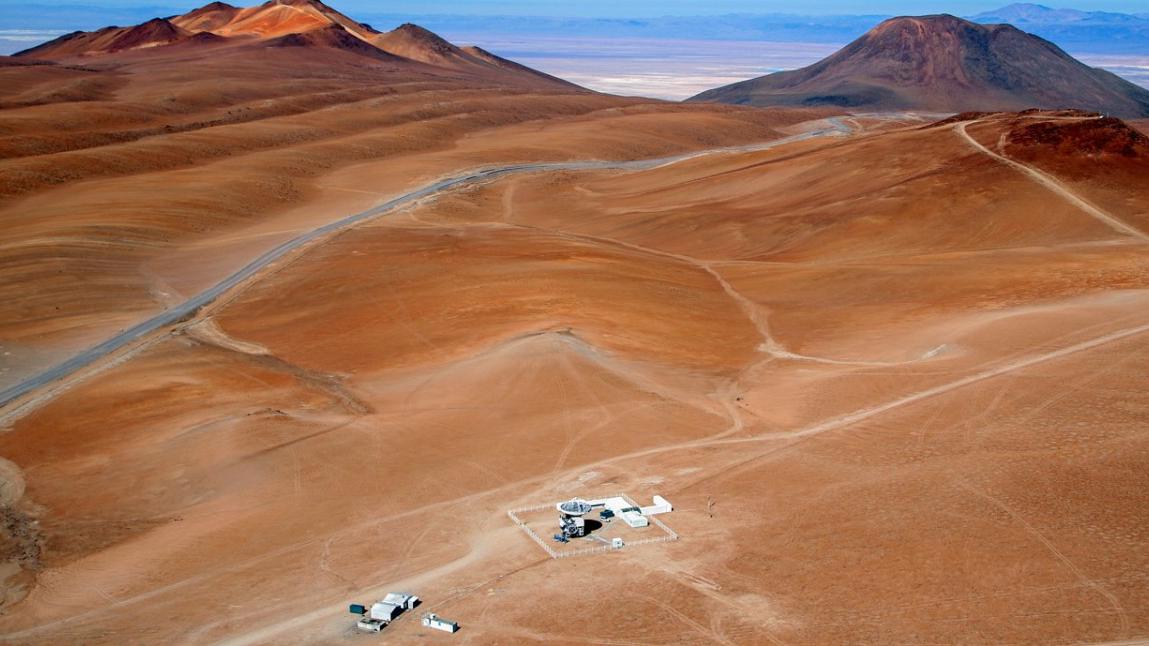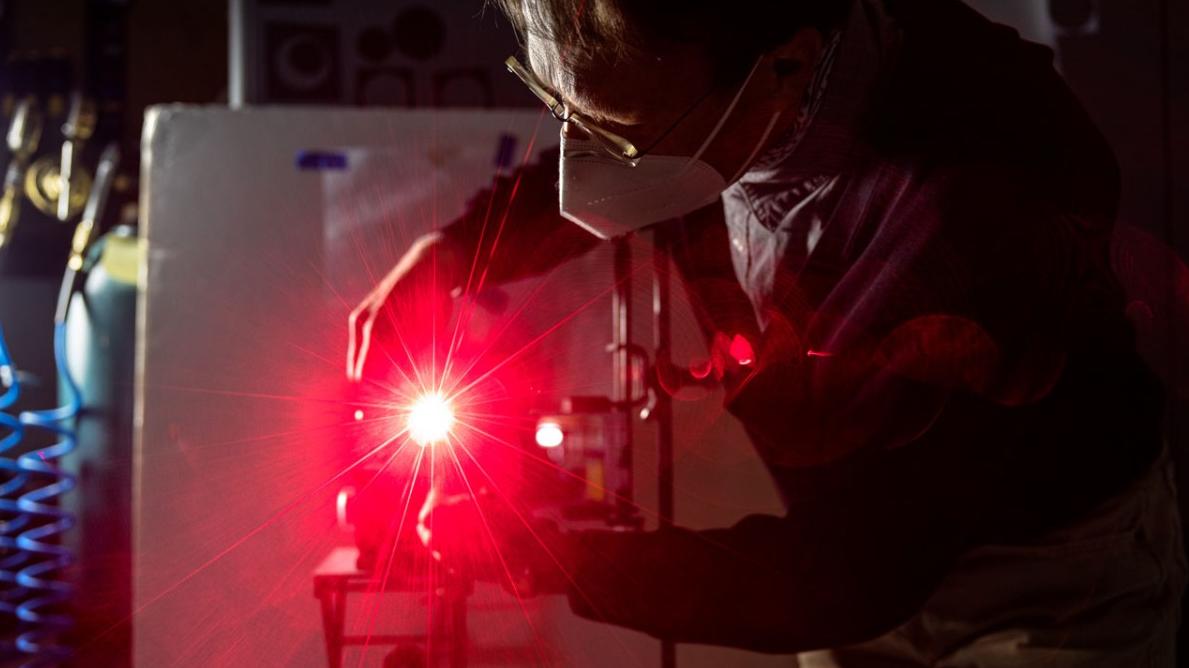On the evening of Dec. 12, 2021, Cornell astronomers Gordon Stacey and Thomas Nikola were dangerously short on time. They’d been awake for nearly 24 hours, with another all-nighter ahead of them.
The skin on their hands had dried out and cracked from living for five weeks at a dizzying elevation in Chile’s Atacama Desert. And they were short-handed, a crew of two instead of the usual four or five, in the Atacama Pathfinder Experiment (APEX) telescope control room.
COVID-19 restrictions, travel delays and bad weather had aligned so they, and a Cornell team working remotely from Ithaca, had only 12 more hours to collect data from their target galaxies: light that had taken 11.5 billion years to reach Earth.
“We look at star formation over cosmic time,” said Stacey, professor of astronomy in the College of Arts and Sciences. “That’s behind everything we do.”
For more than 30 years, Stacey has led research teams using telescopes worldwide to learn about stellar evolution. A few years ago, for instance, Stacey confirmed that some of the highest luminosity galaxies form not through collisions, but through the accumulation of material from the cosmic web. Such discoveries lead to more time on telescopes and further discoveries. Tonight, they were trying to learn even more – but the window of opportunity was closing.
On a break between observations, Stacey chatted on Zoom with the Ithaca team. He finds the work of observing stimulating enough to keep him awake, and he was good to go for the rest of the night.
But Nikola, research associate with the Cornell Center for Astrophysics and Planetary Science and the chief of logistics on this trip, wandered the control room to stay awake.
Walking from monitor to monitor, he checked weather conditions and the telescope observing mode and parameters. Checking the numbers keeps him alert – and once in a while allows him to catch a mistake that could mean the difference between making a discovery and gathering flawed data.
After days of humid or cloudy conditions – even a small amount of moisture in the atmosphere is bad for observing – the sky above APEX was perfectly clear and very dry. The team members returned their attention to the sky in search of two galaxies that formed just two billion years after the Big Bang. Would they detect the emission line from their target before their time was up?
Abundant elements from ‘cosmic noon’
Stacey and his colleagues study emissions coming from galaxies in the epoch known as “cosmic noon,” 8 to 12 billion years ago, using ZEUS-2, a spectrometer about the size and shape of an oil drum and custom built at Cornell.
“We look at fine structure lines from abundant atoms and ions of oxygen, carbon and nitrogen,” Stacey said. “These are the third, fourth and seventh most abundant elements in the universe after helium and hydrogen, and they tell us a lot.”
By measuring how abundant these basic elements were in stars that were born relatively soon after the Big Bang, the team learns how stars form in galaxies, how galaxies evolve, and how stars born during that distant “cosmic noon” compare to our own younger star, the sun, which is only 4.6 billion years old.
The goal for the trip was to install ZEUS-2 at the APEX telescope and then measure a spectral line from doubly ionized oxygen (O++) from distant galaxies. O++, which requires very energetic ultraviolet photons to form, indicates the presence of hot massive stars and helps the researchers trace both how stars formed and the creation of oxygen through generations of stars in galaxies in the early universe.
Before 11 billion-year-old light could reach ZEUS-2, though, ZEUS-2 needed to reach APEX.
The telescope is located above 16,700 feet elevation, about 2,200 feet higher than Mount Whitney, the highest point in the continental U.S.; even in the best of times, installing an instrument there is challenging. When Stacey and Nikola arrived at APEX basecamp, at 8,000 feet, in San Pedro de Atacama on Nov. 16, they were only allowed to work a few hours so they could acclimate to the limited oxygen. They started working at the telescope site the next day, installing ZEUS-2 on APEX.
Once Nikola and Stacey got ZEUS-2 up and running on Nov. 29, doctoral students Christopher Rooney, Catherine Ball and Bo Peng worked tirelessly to test, calibrate and observe with the instrument. “Long Zoom meetings with online collaboration tools have allowed us to pull off this ‘hybrid’ observing run that otherwise is supported by a four- or five-person team at the telescope,” said Amit Vishwas, Ph.D. ’19, research associate, former ZEUS-2 doctoral student, and a member of the team working virtually from Ithaca.
Clear skies and a gift of time
The first night, Dec. 1, was dry enough for observation. “We got some science in the pocket, about four hours observing two different sources,” Stacey said.
But at APEX, only a little moisture in the atmosphere is enough to cloud observations.
The definition of good observing weather, said Rooney, who ran ZEUS-2 from Ithaca during the observations, means that if you add up all the water in the entire atmosphere, from ground level to space, and then used it to make a layer of water on the ground, it should measure less than 1 millimeter deep. Very good weather is less than half a millimeter.
For the remainder of their official observing time, through Dec. 7, even as the researchers in Chile drank three or more liters of water every day to stay hydrated, the atmosphere remained stubbornly humid. The team wondered if the sky would ever clear enough for ZEUS-2 to collect more data. While they waited, Stacey and Nikola ran observation drills with the team in Ithaca. They also checked and rechecked ZEUS-2 – a useful exercise, Stacey said, but one that doesn’t bring in new data.
By Dec. 7, the observation run was starting to look like a wash. They had to be off the telescope by the next day to make way for the next team of researchers, who had already arrived at the basecamp.
That team was led by Stacey’s occasional co-author, Carlos De Breuck, project scientist with the European Southern Observatory. As De Breuck and his team chatted with the Cornell astronomers in the control room and the basecamp cafeteria, they realized the terrible luck Stacey and Nikola were having. De Breuck generously offered them some of his team’s time on the telescope – including one crucial last night, Dec. 12-13.
“I was stunned – and very pleased,” said Stacey. “It was good of them.” The time will be returned to De Breuck at a later date.
On Dec. 12-13, with clear skies above Atacama and flawless performance from the telescope and ZEUS-2, the team pointed the telescope at their targets: two galaxies with large masses and high luminosity. Stacey said these galaxies existed during “the epoch of galaxy assembly,” just before the peak period of star formation in the universe.
The team detected unexpectedly weak O++ line emission from both galaxies, indicating star formation there seems to be triggered by collisions between the two galaxies, rather than accretion of gas from the cosmic web. This was precisely the data they’d come to Chile to collect.
The last days of their APEX research passed in a blur of intense concentration and little sleep. The team in Ithaca kept collecting data even as the sun rose on Dec. 13 and Stacey and Nikola made the 90-minute drive up the mountain road to the summit to pack up ZEUS-2.
“As soon as they did the last observation and calibration, we started disassembling things,” Nikola said.
Normally, it takes five to seven days to take ZEUS-2 down. This time, they had just 36 hours.
While they scrambled to pack up, Stacey got a call from the APEX station manager: “I heard you guys didn’t sleep last night,” he said.
Stacey paused for a second, thinking of the drive up the steep mountain road after a sleepless night of observation, and confessed, “Yes.”
“That’s not safe,” said the manager. “I am sending someone to give you a ride down.”
Stacey considered this for a microsecond. “Thanks,” he said. He and Nikola had safely completed the critical step of dismounting ZEUS-2 from APEX, and there was no sense in risking falling asleep on the drive down.
With the APEX staff’s support, the Cornell researchers stored their instrument at APEX, fully assembled and wrapped in plastic to keep out Atacama’s fine, blowing sand, and started their long return to Ithaca.
ZEUS-2 won’t be idle for long. The astronomers have been analyzing their data from December and applying for more observation time on various telescopes around the world. Among other upcoming observations, Stacey’s group will return to APEX this summer.
“This run has been an adventure,” Stacey said, “one of the hardest observing runs we have ever pulled off.”









